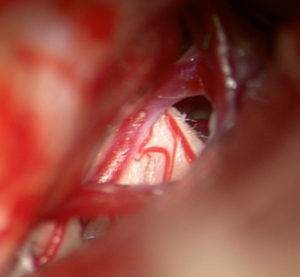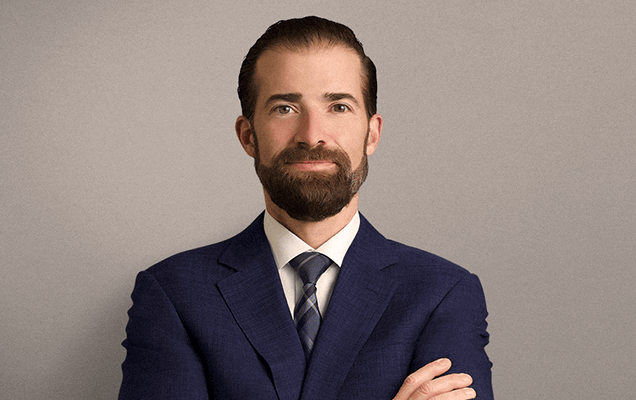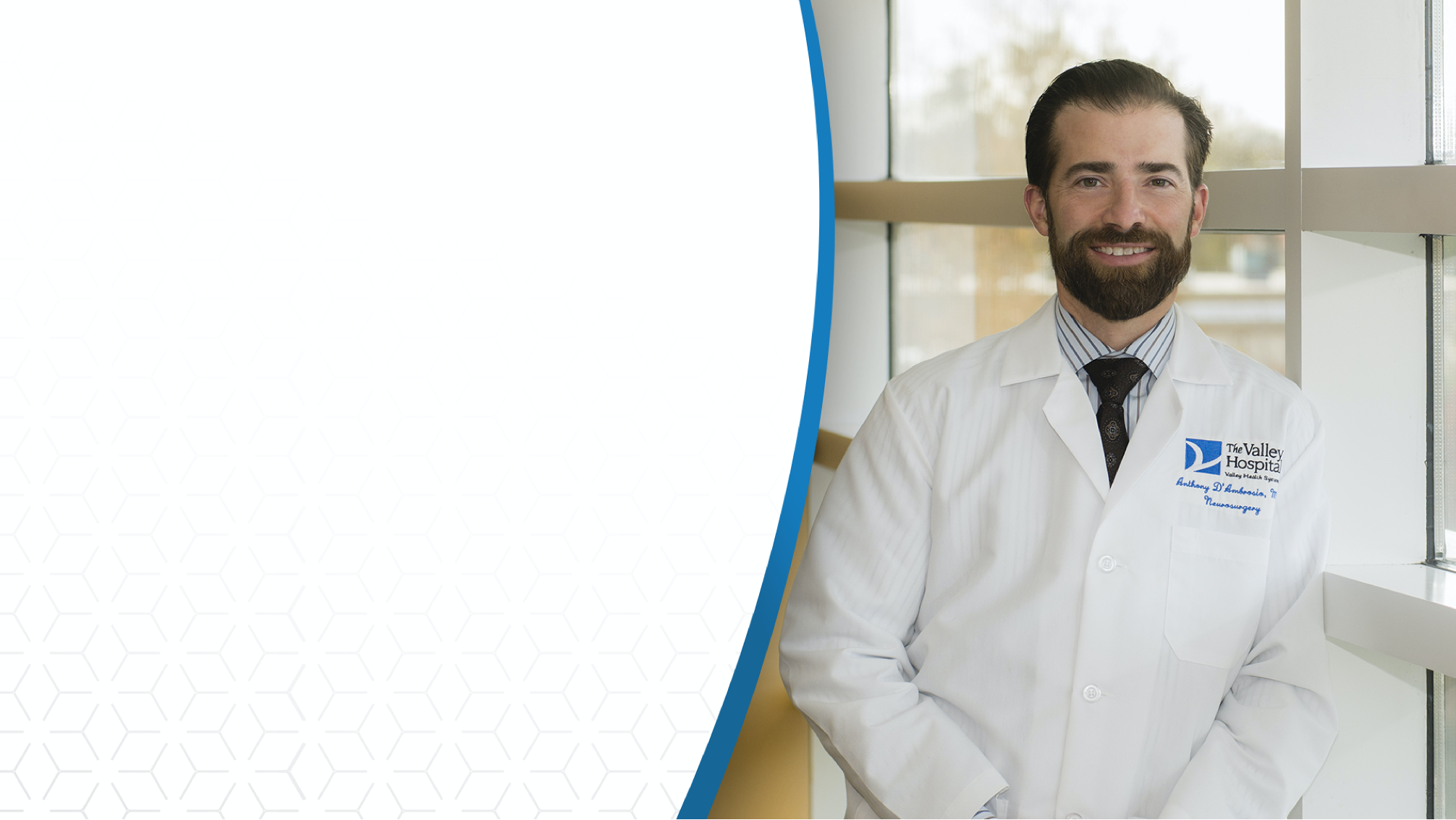Microvascular Decompression – An overview from Dr. D
Microvascular decompression – MVD – Overview
Microvascular decompression, also called an MVD, is relatively simple surgical procedure. The goal of this surgical procedure is to safely place one or more telfon sponges in between your trigeminal nerve and a blood vessel. The blood vessel isn’t broken or weak, it is just leaning on or compressing the trigeminal nerve too much, and the nerve isn’t happy being so close to the blood vessel. As a result, your trigeminal nerve is over active and fires painful jolts when it shouldn’t. The MVD sponges help calm everything down a bit. That’s all.
Microvascular decompression surgery is just one of several treatment options for cranial nerve problems like trigeminal neuralgia and hemifacial spasm.
Other options designed to treat trigeminal neuralgia include gamma knife radiosurgery, percutaneous rhizotomy, pain stimulation, injections and continued medications. That said, as far as surgical treatments are concerned, MVD surgery is an option that all people suffering from the long-term effects of facial pain or hemifacial spasm should know about. Whenever anyone considers brain surgery for facial pain or spasm, they should also educate themselves on the long-term results and side effects.
Microvascular Decompression for Trigeminal Neuralgia
The reason this surgical treatment is the most successful treatment of trigeminal neuralgia is because it protects your trigeminal nerve from the heat and pressure caused by the “offending vessel”. Unlike medications, MVD surgery goes directly to the source of your facial pain or spasm. The sponges are put around the cranial nerve that’s upset or over-excited. Your surgeon is protecting your nerve. Like a pillow protects your head at night or insulation protects a wire.
Although MVD surgery carries risks, generally speaking, facial numbness is not one of them. Also, as compared to some of the other treatment options, pain recurrence is less common with MVD than it is for several alternative treatment options. Often times, patients with a history of multiple sclerosis (MS) will develop trigeminal neuralgia. For MS patients, MVD can be considered, but only if a multidisciplinary team has reviewed the case and the indications.
If you are one of the lucky people who has already learned about the microvascular decompression procedure and are planning to go forward with surgery, then it’s important to understand how to prepare for this procedure. Use this patient guide to understand what it is like to recover from MVD surgery.
Operating Room
Microvascular decompression is performed while you are under general anesthesia. Once you are appropriately sedated, a small opening, about the size of a quarter, will be made behind your ear. After that, the surgeon finds the nerve and the artery, together. At the point of contact, one or more teflon sponges are carefully placed in between the nerve and the vessel. Next, a cranioplasty will be made to fit perfectly in place.
At the end of the surgery, the skin is carefully sutured and a small bandage is placed. Including the time it takes to go to sleep and wake up, the surgery typically lasts between two and three-and-a-half hours.

Microvascular decompression – Image from the operating room after the teflon sponge is placed under the vessels.
Are you out of options
to eliminate your pain?
Recovery Room
Once you are moved to recovery, your vital signs will be carefully monitored to ensure that you are coming out of sedation appropriately. In addition, you’ll begin receiving intravenous pain medication. This pain medication is meant to make you comfortable as you begin the process of recovery. You’ll likely spend an hour or two in recovery, although you may not remember all of that time as it includes the process of coming out of sedation.
NeuroICU
In many cases, patient will spend one night in the Neuro-ICU, simply as a precaution and for close care. In addition to the onset of some pain around the incision, it’s also normal to experience mild nausea. Like your head pain, your nausea will be treated intravenously. Additionally, your vital signs will continue to be monitored, as well as the effectiveness of your pain and nausea medications. While in NeuroICU, most patients are sitting up and eating dinner with family and friends.
Your Remaining Hospital Time
The next morning, you’ll be transferred to a regular hospital room. Here, nurses and therapists will work with you to sit up, get out of bed, use the restroom or recline in a chair. The key sign your medical team will be evaluating during your stay in a regular room will be your ability to eat, manage pain with only pills and walk without any issues.
People typically leave the hospital after a total of two to three days, including the day of surgery. Should you experience any complications, potentially caused by other health issues, your stay could be longer.
Recovering at Home
Physically, you might feel weak and sore for several days after MVD surgery. Most often, people feel quite good after the procedure. You can wash your hair 72 hours after surgery and take a nice shower. You are allowed to do everything you need to do at home except drive and lift anything heavy. Generally, patients return to the surgeon’s office around 7 days after surgery to look at the incision and touch base. If the pain is gone, medications can be slowly tapered over the next several weeks. Driving can start at around 7 days after MVD surgery. heavy lifting isn’t permitted until 6 weeks post-op.
Including your hospitalization, your microvascular decompression recovery time may span between two and four weeks with gradual progress made along the way. The best way to make the quickest recover is to not over exert yourself, follow your surgeon’s recovery plan as best you can, and live within responsible expectations for recovery length.
Be kind and patient with yourself as you heal. Pain, nausea, weakness and fatigue are all common occurrences in the first few weeks. Once those diminish, you’ll truly be able to appreciate the positive impact that microvascular decompression has had on you.

About Dr. Anthony D'Ambrosio
Dr. Anthony D'Ambrosio is an accomplished neurosurgeon in North Jersey and a proud member of Neurosurgeons of New Jersey practicing primarily out of their Ridgewood office conveniently located on East Ridgewood Avenue. Dr. D’Ambrosio focuses his clinical practice on brain tumors, nervous system disorders, and facial pain disorders. He has expertise in a variety of complex surgical and radiosurgical techniques as well as minimally invasive procedures intended to successfully treat complex diseases of the brain. These techniques include micro-neurosurgery, microvascular decompression surgery and Gamma Knife radiosurgery. He's authored over 25 peer-reviewed journals and is the recipient of many awards.
Recent Posts:





